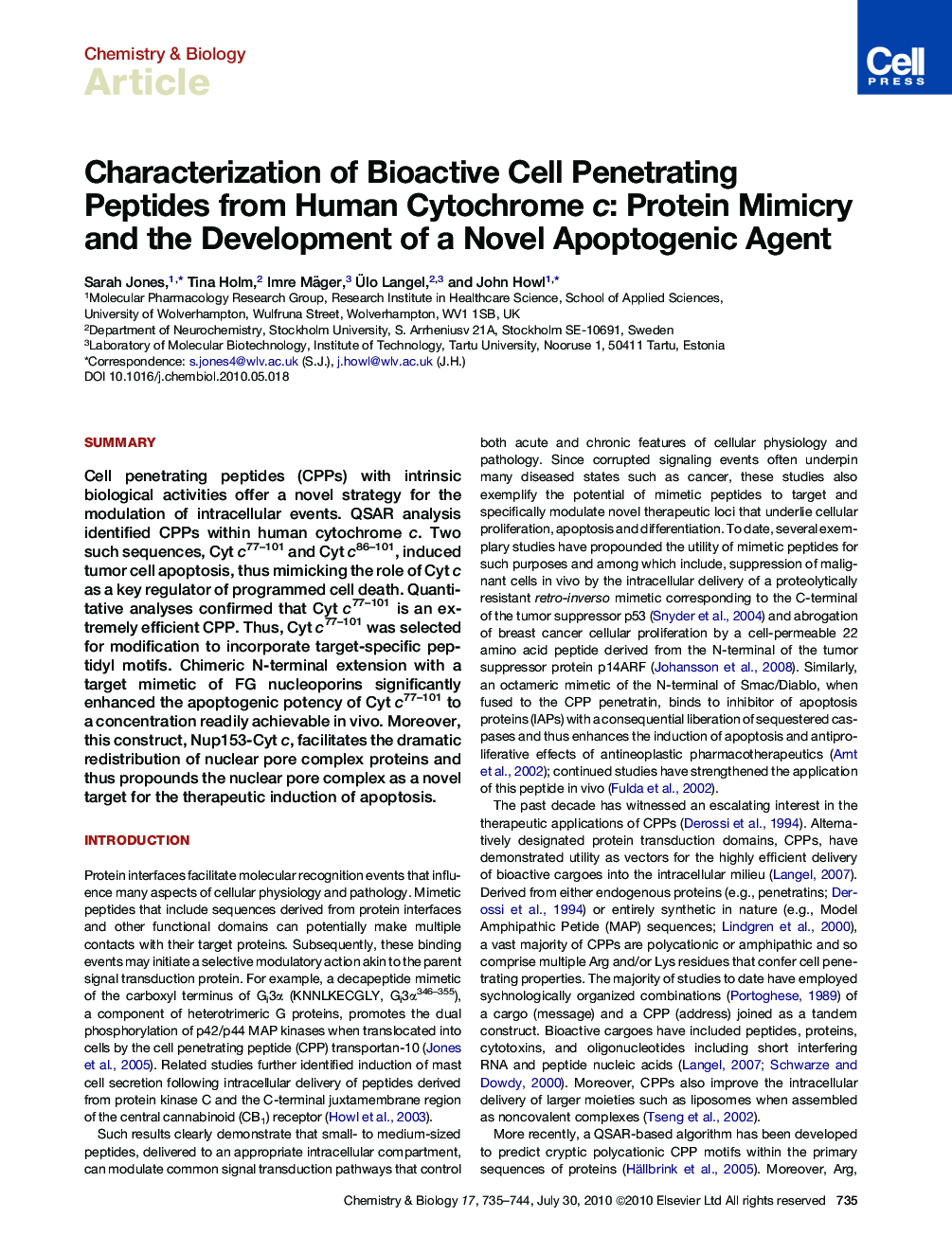| Article ID | Journal | Published Year | Pages | File Type |
|---|---|---|---|---|
| 1392502 | Chemistry & Biology | 2010 | 10 Pages |
SummaryCell penetrating peptides (CPPs) with intrinsic biological activities offer a novel strategy for the modulation of intracellular events. QSAR analysis identified CPPs within human cytochrome c. Two such sequences, Cyt c77–101 and Cyt c86–101, induced tumor cell apoptosis, thus mimicking the role of Cyt c as a key regulator of programmed cell death. Quantitative analyses confirmed that Cyt c77–101 is an extremely efficient CPP. Thus, Cyt c77–101 was selected for modification to incorporate target-specific peptidyl motifs. Chimeric N-terminal extension with a target mimetic of FG nucleoporins significantly enhanced the apoptogenic potency of Cyt c77–101 to a concentration readily achievable in vivo. Moreover, this construct, Nup153-Cyt c, facilitates the dramatic redistribution of nuclear pore complex proteins and thus propounds the nuclear pore complex as a novel target for the therapeutic induction of apoptosis.
► QSAR analysis identifies biologically active CPPs within signaling proteins ► CPPs are identified that mimic apoptogenic and trafficking events of cytochrome c ► Chimeric fusion of Cyt c77–101 and Nup153 980–987 yields a potent apoptogen ► The nuclear pore is propounded as a novel target for the induction of apoptosis
